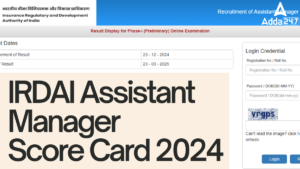Dear Readers,
Practice is the key to perfection in Quant, so brush up your skills and test yourself with these 15 questions of Twisted Ones Quantitative Aptitude Questions for NICL AO Mains.
Q1. A tank is filled with water through five pipes. The first pipe can fill it in 40 minutes; the second, the third and the fourth together can fill it in 10 minutes; the second, the third and the fifth fill it in 20 minutes; the fourth and the fifth together in 30 minutes. In what time will the tank be filled if all the five pipes work simultaneously?
Q2. A 100 m long train passes a man, running in the same direction at 6 km/hr, in 5 second and a car travelling in the same direction in 6 s. At what speed is the car travelling (length of both the man and car is negligible)?
(a) 18 km/hr
(b) 20 km/hr
(c) 24 km/hr
(d) 30 km/hr
(e) None of these
Q3. In a race of 200 m A beats S by 20 m and N by 40 m . If S and N are running a race of 100 m with exactly the same speed as before, then by how many metres will S beat N?
(a) 11.11 m
(b) 10 m
(c) 12 m
(d) 25 m
(e) None of these
Q4. There are 3 containers A, B and C which contain water, milk and acid respectively in equal quantities. 10% of the content of A is taken out and poured into B. Then, the same 10% from B is transferred to C, from which again the same 10% is transferred to A. What is the proportion of milk in container A at the end of the process ?
(a) 9/10
(b) 1/11
(c) 1/121
(d) 10/1011
(e) None of these
Q5. A sporting goods store ordered an equal number of white and yellow tennis balls. The tennis ball company delivered 45 extra white balls, making the ratio of white balls to yellow balls 1/5 ∶ 1/6. How many white tennis balls did the store originally order for?
(a) 450
(b) 270
(c) 225
(d) 230
(e) None of these
Q6. Sumit works as a state contractor for PWD and supplies bitumen mix for road construction. He has two varieties of bitumen, one at Rs. 42 per kg and the other at Rs. 25 per kg. How many kg of first variety must Sumit mix with 25 kg of second variety, so that he may, on selling the mixture at 40 kg, gain 25% on the outlay?
(a) 30
(b) 20
(c) 25
(d) 15
(e) None of these
Q7. A shop stores x kg of rice. The first customer buys half of this amount plus half a kg of rice. The second customer buys half of the remaining amount plus half a kg of rice. Then, the third customer also buys half of the remaining amount plus half a kg of rice. Thereafter, no rice is left in the shop. Which of the following best describes the value of x?
(a) 2≤x≤6
(b) 5≤x≤8
(c) 9≤x≤12
(d) 11≤x≤14
(e) None of these
Q8. What is the area of the face of a clock described by its minute hand between 9 a.m. and 9.35 a.m., if the minute hand is 10 cm long?
Q9. If the numerator and the denominator of a fraction are each increased by 4, the fraction becomes 2/1 and when numerator and denominator of the same fraction are each decreased by 6, the fraction becomes 12/1. Then sum of the numerator and the denominator is:
(a) 11
(b) –11
(c) 25
(d) –25
(e) None of these
Q10. To open a lock, a key is taken out of a collection of n keys at random. If the lock is not opened with this key, it is put back into the collection and another key is tried. The process is repeated again and again. It is given that with only one key in the collection, the lock can be opened. The probability that the lock will open in n trials is:
Q.11. A merchant can buy goods at the rate of Rs. 20 per good. The particular good is part of an overall collection and the value is linked to the number of items that are already on the market. So, the merchant sells the first good for Rs. 2, second one for Rs. 4, third for Rs. 6…and so on. If he wants to make an overall profit of at least 40%, what is the minimum number of goods he should sell?
(a) 24
(b) 18
(c) 32
(d) 27
(e) None of these
Q.12. In a local election, 2400 people were to vote for Party A or Party B. Party A was bound to win the election. However, on Election Day, 33.33% of the voters of Party A were kidnapped. Party B was also able to influence the remaining Party A voters and thus double the strength of its voters. In this way, Party A lost by a majority which was half of that by which it would have won had the elections been fair. How many people finally voted for Party A and Party B?
(a) 600(A), 1200(B)
(b) 300(A), 600(B)
(c) 450(A), 900(B)
(d) 600(A), 900(B)
(e) None of these
Q13. Three cars leave A for B in equal time intervals. They reach B simultaneously and then leave for Point C which is 240 km away from B. The first car arrives at C an hour after the second car. The third car, having reached C, immediately turns back and heads towards B. The first and the third car meet a point that is 80 km away from C. What is the difference between the speed of the first and the third car?
(a) 60 kmph
(b) 80kmph
(c) 20 kmph
(d) 40 kmph
(e) None of these
Q14. A trader marked his goods at 20% above the cost price of Rs.245346. He sold half the stock at the marked price, one-quarter at a discount of 20% on the marked price and the rest at a discount of 40% on the marked price. His total gain is-
(a) 2%
(b) 15%
(c) 2.75%
(d) 13.5%
(e) None of these
Q15. There is 60% increase in an amount in 6 years at simple interest. What will be the compound interest of Rs. 12,000 after 3 years at the same rate?
(a) 2160
(b) 3120
(c) 3972
(d) 6240
(e) None of these
You may also like to read:
Study notes of quant for bank exams
More questions of quantitative aptitude




 The Hindu Review October 2022: Download ...
The Hindu Review October 2022: Download ...
 IRDAI Assistant Manager Score Card 2024 ...
IRDAI Assistant Manager Score Card 2024 ...
 IRDAI Assistant Manager Prelims Cut Off ...
IRDAI Assistant Manager Prelims Cut Off ...




